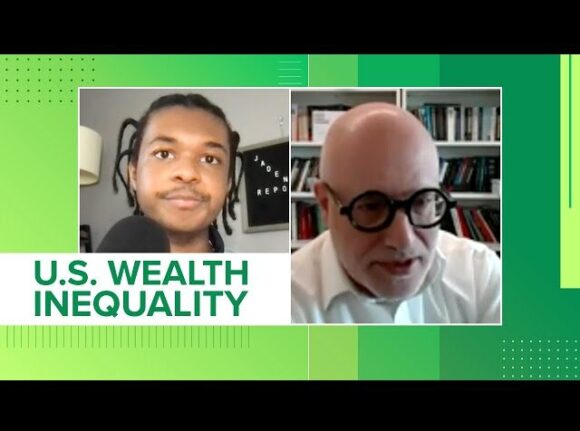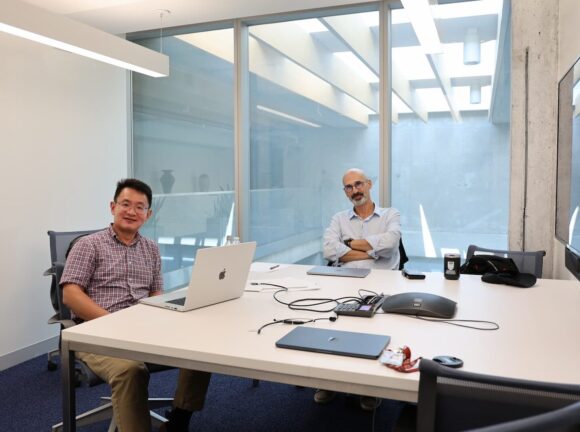The Economics of Childhood: Award-winning video series with Steven Durlauf
“Inequality is unjust when it is due to factors for which a person is not responsible.”
Steven Durlauf
How predictive are childhood and adolescence of a person’s future opportunities and outcomes? Why do inequalities persist across generations? What policies can improve social mobility and enhance the prosperity of a society? Stone Center Director and Frank P. Hixon Distinguished Service Professor, Steven Durlauf, explores these questions in an award-winning six-part video series titled The Economics of Childhood.
Published in 2023 in partnership with the Institute for New Economic Thinking (INET), the series is available on YouTube and the INET website. It garnered significant acclaim by comprehensively exploring economic theories related to childhood development and mobility. Recognized in the academic and educational communities, the series received two prizes from The Telly Awards in 2024:
- The Gold Award in Education and Discovery.
- The Silver Award in Diversity, Equity, and Inclusion (DEI).
Key Themes and Insights
In this series, Durlauf explains what mobility is and why it is important. He focuses on the problem of persistent inequality, a phenomenon in which the economic status and opportunities of the parents are transmitted to their children for generations. Durlauf calls attention to affluence traps and poverty traps as key self-reinforcing mechanisms behind persistent inequality, where the rich accumulate wealth and poor remain poor. These mechanisms propagate inequalities through discrimination based on race or gender, segregation, regional differences, and institutional bottlenecks. When these trap-like conditions undermine meritocratic principles and unduly inhibit opportunities for children and adolescents, they culminate into an unequal and a less mobile society.
For these reasons, Durlauf advocates for methodological rigor in understanding these phenomena. He warns against blindly employing conventional measurements offered in economics and challenges modern researchers to develop interdisciplinary toolkits. Considering additional factors such as regional measurements, group differences, and the transmission of cognitive and personality traits is instrumental for a comprehensive view of mobility patterns. Through recognition that methodological tools have built-in biases and a commitment to the development of novel research methods, data can help us understand inequality and mobility.
Durlauf outlines three reasons why mobility and the problem of persistent inequality matter. Firstly, mobility affects the wellbeing of individuals within a society. In episode two, “The Importance of Mobility”, the direct correlation between life expectancy and levels of inequality illustrates this point. Secondly, he argues that improving mobility serves to rectify injustices. Persistent inequalities can be considered unjust when they result from factors beyond an individual’s control, such as discrimination. Lastly, Durlauf makes the case that mobile societies are more productive and efficient. When societies maximize opportunities for all, more individuals reach their full potential, which in turn enhances overall productivity. This is particularly important in modern, interconnected economies where the success of one segment of society translates to broader economic growth.
“Equality of opportunity is productive because it allows people to fulfill their potential.”
Policy Insights
For policymakers, The Economics of Childhood offers multiple strategies to invest in and minimize adverse experiences during childhood and adolescence.
Durlauf points to anti-poverty and equitable educational policies as key areas of investment. He cites the Earned Income Tax Credit (EITC) as an exemplary anti-poverty policy that improves the socioeconomic status of disadvantaged families and yields significant long-term benefits for children. Similarly, decisions on the funding of public education have important consequences for mobility; substantial inequalities exist in per-pupil expenditures across regions in the US. School finance reforms addressing these inequalities would lead to improved student achievement and better outcomes in adulthood.
Moreover, Durlauf discusses criminal justice reform and Associational Distribution policies. Childhood exposure to parental incarceration is profoundly damaging to an individual’s prospects by depriving them of vital providers of human capital and economic resources. For adolescents, direct experience of incarceration attenuates their education and connections to society. Associational Distribution policies, Durlauf explains, aim to redress such isolation common in disadvantaged socioeconomic environments. These interventions seek to alter the formation of associations through measures such as affirmative action in school admissions, hiring policies, improved availability of public transit, and public housing decisions.
“Self reinforcement of adverse events is the source of persistent disadvantage.”


